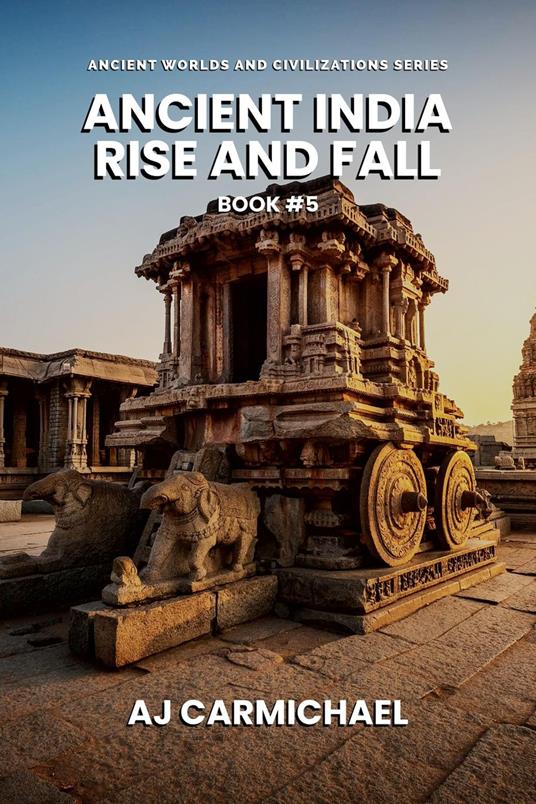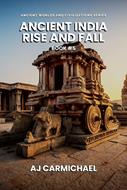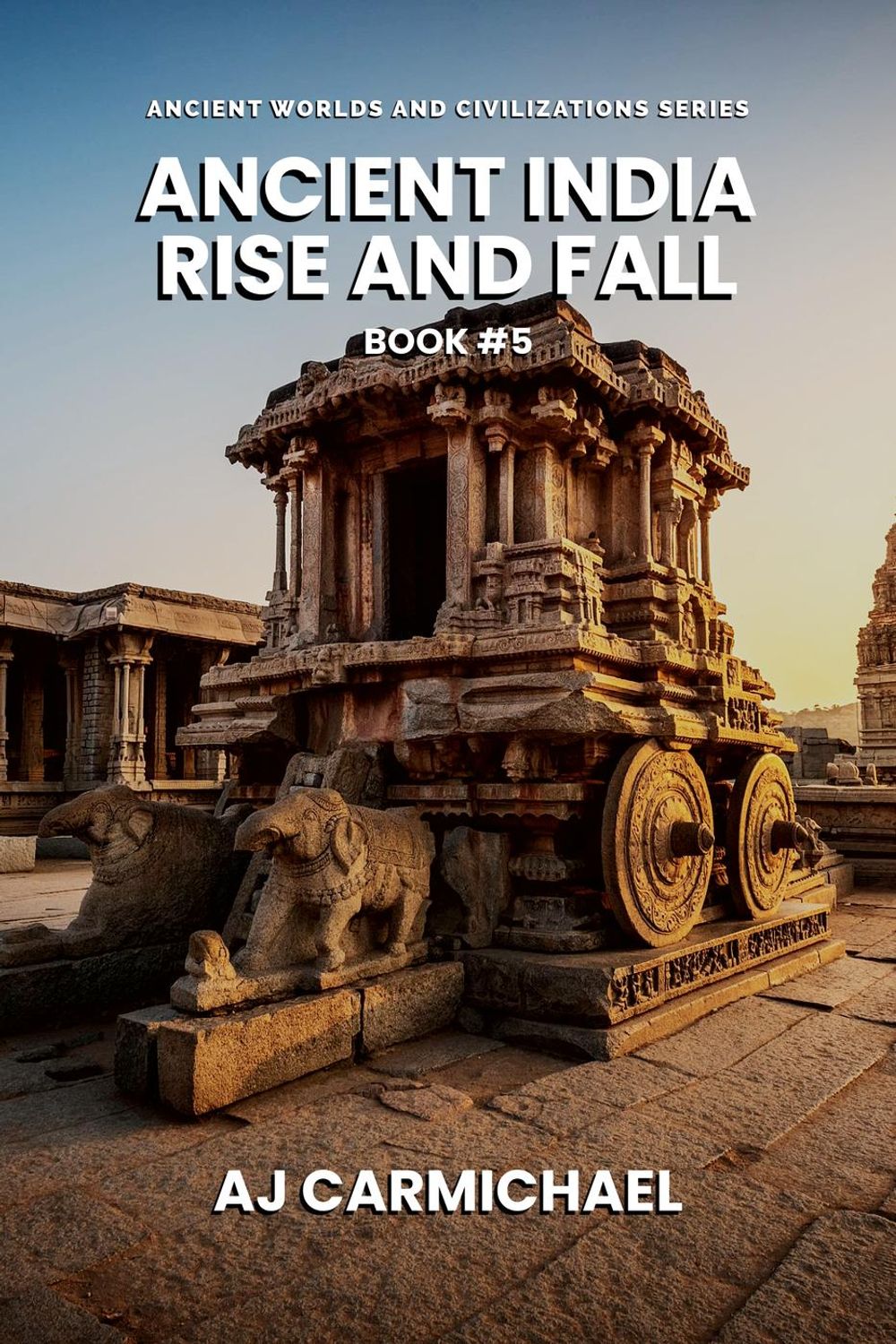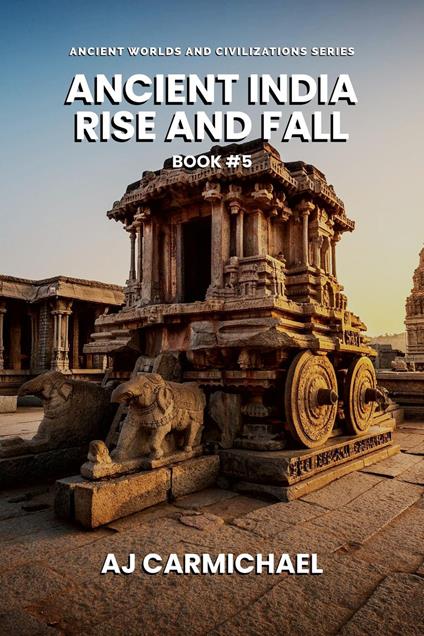Ancient India, Rise and Fall
In ancient Indian history, there were four significant eras as highlighted below, a quick introduction is important in order to digest the material in this book. Prehistoric era: From 500,000 BCE to 11,000 BCE, South Asian hunter-gatherers made stone tools and painted cave paintings at Bhimbetka during the Old and Middle Stone Ages. Merhgarh, in Baluchistan, was where South Asian farming began between 11,000 and 3000 years ago. From 2500 BCE to 1900 BCE, the great Indian cities of Mohenjo Daro and Harappa provide us with much archaeological evidence. Eras of India: Vedic and post-Vedic, No Aryan invasion took place, but a nomadic group of Indo-European speakers migrated from Iran and Afghanistan, calling themselves Arya, or the noble. Over the past four millennia, Indo-Aryan culture has developed uniquely within India, blending the values and heritages of the Arya and indigenous peoples. In the Indo-European language family, the Rig Veda is the oldest text. Among the three Vedas and other complementary Vedic literature, it is a crucial text in Vedic Hinduism. We have today's vast agricultural infrastructure in north India due to the expansion of the Indo-Aryans from Punjab to the Ganga basin. Mahajanapadas (great states) were formed from the Vedic polity, which Magadha dominated. Northwest India was invaded by both the Persians and the Greeks later in this period. Ajivakas, Buddhists, and Jains objected to the caste system, animal sacrifices, brahman dominance, and the Vedas in Vedic Hinduism. The Great Empires lasted from about 300 BCE to c. AD 500. From Chandragupta Maurya's Arthashastra, an excellent manual of political economy, we can understand the principles of the Mauryan Empire, founded from Magadha in 321 BCE. With the help of many rock and pillar inscriptions, Ashoka humanized the empire and propagated Buddha's principles. The smaller Shaka, Kushan, and Satavahana kingdoms followed the Mauryan Empire. A flourishing agricultural industry and trade, both domestic and international, contributed significantly to Indian prosperity during this period. China and Rome dominated trade between India and China. According to the Samanta philosophy of tolerant neighborliness, the Gupta Empire followed a model of decentralized power. The Hindu-Buddhist-Jain civilization reached its peak of elitism under the Guptas. Classical Indian culture refers to that. Throughout history, Buddhism has remained popular but has evolved into Mahayana Buddhism, which emphasizes the Bodhisattva. Buddhism, Sanskrit literature, and mathematics flourished in this era, as at Ajanta. The feudal era lasted from 500 AD to 1200 AD (and beyond). Among the most prominent post-Gupta regional and feudal kingdoms were those of King Harsha, the early Chalukyas, and the Pallavas. The kings maintained their power through large land grants, feudatory power, and patronage systems. During the eleventh and twelfth centuries, the aggressive and iconoclastic Turco-Afghans quickly invaded India due to the inter-Indian wars waged by the Gurjara-Pratihara, Pala, and Rashtrakuta kingdoms. The deep south remained highly dynamic and Hindu under the Pallavas and Cholas. The Vedic and Puranic forms of Hinduism gradually replaced Buddhism in India, while the holy and puranic forms of Hinduism stayed. Muslim power, embodied in the slave dynasty of Qutb-ud-Din Aybak, entrenched itself in north India from 1206 onward, paving the way for Indo-Islamic culture to flourish.
-
Autore:
-
Anno edizione:2022
-
Editore:
-
Formato:
-
Lingua:Inglese
Formato:
Gli eBook venduti da Feltrinelli.it sono in formato ePub e possono essere protetti da Adobe DRM. In caso di download di un file protetto da DRM si otterrà un file in formato .acs, (Adobe Content Server Message), che dovrà essere aperto tramite Adobe Digital Editions e autorizzato tramite un account Adobe, prima di poter essere letto su pc o trasferito su dispositivi compatibili.
Cloud:
Gli eBook venduti da Feltrinelli.it sono sincronizzati automaticamente su tutti i client di lettura Kobo successivamente all’acquisto. Grazie al Cloud Kobo i progressi di lettura, le note, le evidenziazioni vengono salvati e sincronizzati automaticamente su tutti i dispositivi e le APP di lettura Kobo utilizzati per la lettura.
Clicca qui per sapere come scaricare gli ebook utilizzando un pc con sistema operativo Windows



